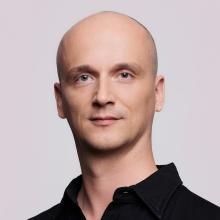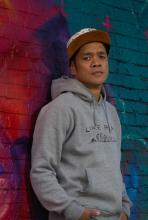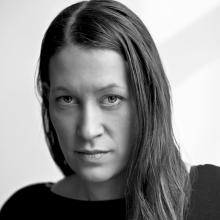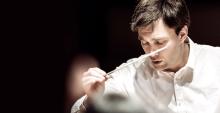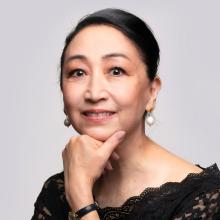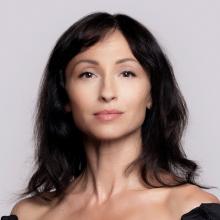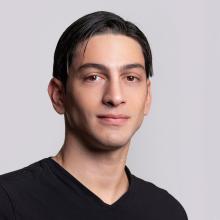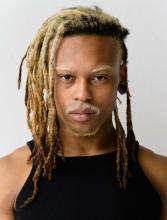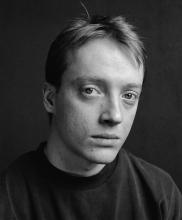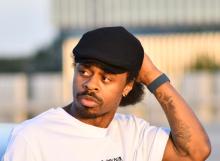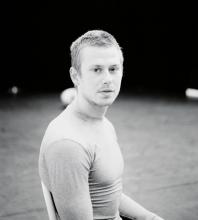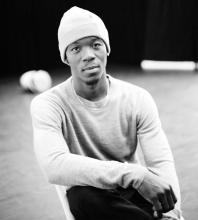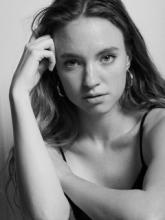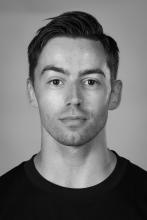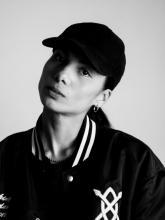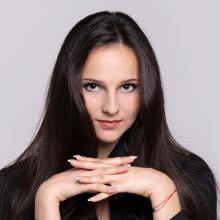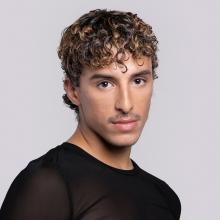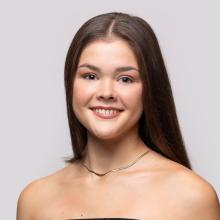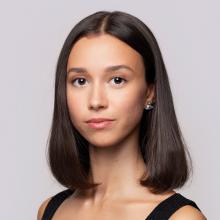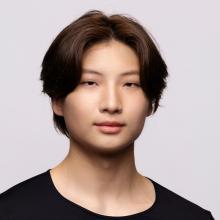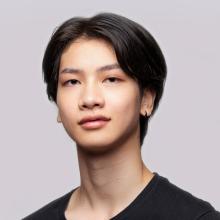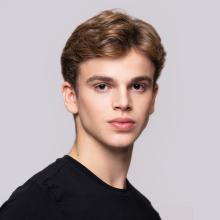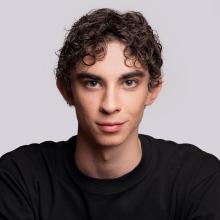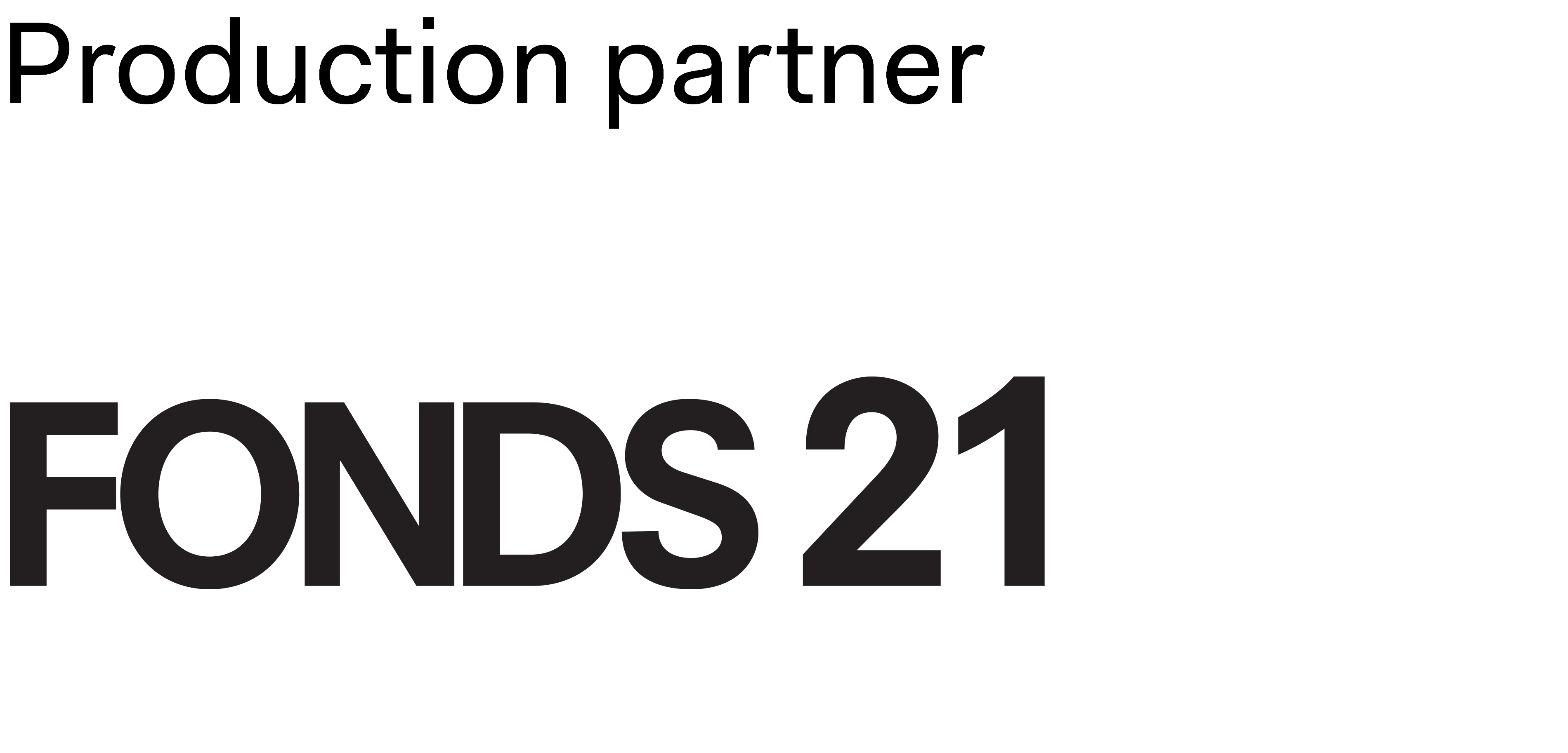Dorian
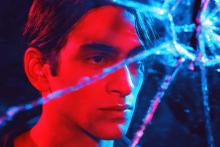
Performance information
Voorstellingsinformatie
Performance information
Choreography
Ernst Meisner and Marco Gerris, in collaboration with the dancers
Music
Joey Roukens - Dorian
Set and costume design
Dieuweke van Reij
Lighting design
Mike den Ottolander
Electronic sounds and effects
Rik Ronner
Live illustrator
Luca Andrea Stappers
Ballet master
Caroline Sayo Iura
Intimacy coordinator
Markoesa Hamer
Musical accompaniment
Dutch National Ballet Orchestra conducted by Karel Deseure
Co-production from Dutch National Ballet and ISH Dance Collective
World premiere
11 May 2023, Dutch National Opera & Ballet, Amsterdam
Duration
circa two hours, including one interval
Set, costume, props, wigs and make-up, lighting production
The Technology department of Dutch National Opera & Ballet
Production manager
Joshua de Kuyper
Stage managers
Marie-Jose Litjens
Roland Lammers van Toorenburg
Production supervisor
Mark van Trigt
First carpenters
Peter Brem
Lighting managers
Angela Leuthold
Lighting supervisor
Wijnand van der Horst
Video technician
Rutger Flierman
Sound technician
David te Marvelde
Assistant costume production
Eddie Grundy
First dresser
Sanne Kamp
Orchestra manager
David Eijlander
Introductions
Loraine Pengel (ISH Dance Collective)
Synopsis
Follow the link below to read the synopsis of Dorian.
Synopsis
Act 1
Dorian is a rough diamond of stunning beauty. When he arrives in the big city, people fall head over heels for him. One of them is the young dancer Sybil, whose path he crosses in the crowd of people, and the promising painter Basil. Basil finds his muse in Dorian, and paints his portrait.
Basil’s best friend, Henry, is an intriguing art-lover. He is very impressed by the portrait, but even more so by Dorian himself. He sees in him a blank page on which to project his darkest side. He introduces Dorian to all his friends, who come to admire the painting. This leads Dorian to express the wish that he could always stay as young and handsome as his portrait.
Dorian visits Sybil in her dance studio and a passionate love is awakened. But Henry’s influence has already tainted Dorian. He leaves Sybil abruptly to follow Henry to an exclusive club of decadent individuals. Dorian is immediately the centre of attention and he enjoys the sensual energy.
Sybil has followed Dorian. While Henry looks on mockingly, she tries to draw Dorian to her through her love, but Dorian spurns her and Sybil runs out of the club in anger. Dorian is startled and comes face to face with himself. He feels a great inner change take place, which remains invisible to the outside world. This reality can only be seen on his portrait.
Dorian basks in the adoration of the people in the club and becomes totally immersed in this new world. At the moment the crowd literally puts him on a pedestal, a furious Sybil returns. Watched by Henry, she and Dorian have a fatal argument.
Dorian looks at his portrait and sees into the chasm of his soul.
Act 2
Dorian ends up in a downward spiral and wanders through the labyrinth of his thoughts. He feels lost and collapses.
Henry finds Dorian and helps him struggle to his feet. He tries to tempt Dorian to resume his extreme lifestyle, when Basil appears and is shocked to see the state his friend is in.
Henry and Basil each try to win over Dorian, but Dorian pushes them away and flees. Basil sees the change in the portrait and realises that something strange is going on.
Basil follows Dorian to a grim club filled with people who, like Dorian, are drowning their sorrows in drink and drugs. He wants to help Dorian, but when he tries to lead him away from the club, Dorian’s mood suddenly changes completely and in his rage he kills Basil.
From then on, Dorian can no longer tell fantasy from reality. He comes up against himself and all the ghosts of his past. He is seized with guilt, attacks a copy of himself and dies. All the transformations in the portrait vanish and the painting returns to its original state.
Henry, left behind alone, has to go in search of a new game.
‘We are all Dorian!’
An interview with choreographers Ernst Meisner and Marco Gerris.
‘We are all Dorian!’
For the third time, ballet choreographer Ernst Meisner and hiphop choreographer/director Marco Gerris are combining forces. They say their strength lies in the fact that their backgrounds are totally different. Ernst says, “Using a variety of dance styles opens up even more possibilities.” Marco adds, “It’s not that we always use hiphop for the dark parts of Dorian or the ballet idiom for a love scene. It’s precisely the crossover that we find interesting.” Ernst says, “Sometimes, the hiphoppers shine, and sometimes the ballet dancers, but it’s even more fun when everything comes together in one new, unique idiom.
After Narnia (based on a fantasy story by C.S. Lewis) and GRIMM (a crazy mix of the Grimm fairy tales), you’re tackling a totally different and exciting subject in Dorian. How was the idea born and how did you approach it together?
Ernst: “The first seed for Dorian was planted by media presenter Chazia Mourali. She was very enthusiastic about Narnia and GRIMM, and said out of the blue, ‘You two should do something with The Picture of Dorian Gray.’ The idea simmered for a long time and then we forgot about it, but one day we said, ‘We should take a look at what Oscar Wilde’s novel means to us and what we could do with it’.”
Marco: “What we did know was that we wanted to do something very different again. And that after two family productions, we now wanted to broach a more adult theme. We felt the need to dig deeper into the material, with regard to both content and dance idiom, and instinctively we sensed that Wilde’s book would give us that opportunity.”
Ernst: “There are so many wonderful themes in the book; so many good and exciting things, and so much that’s still so relevant today.”
Marco: “Something that really appealed to us was the story’s thriller-like quality. It’s often quite spooky, almost like a horror film.”
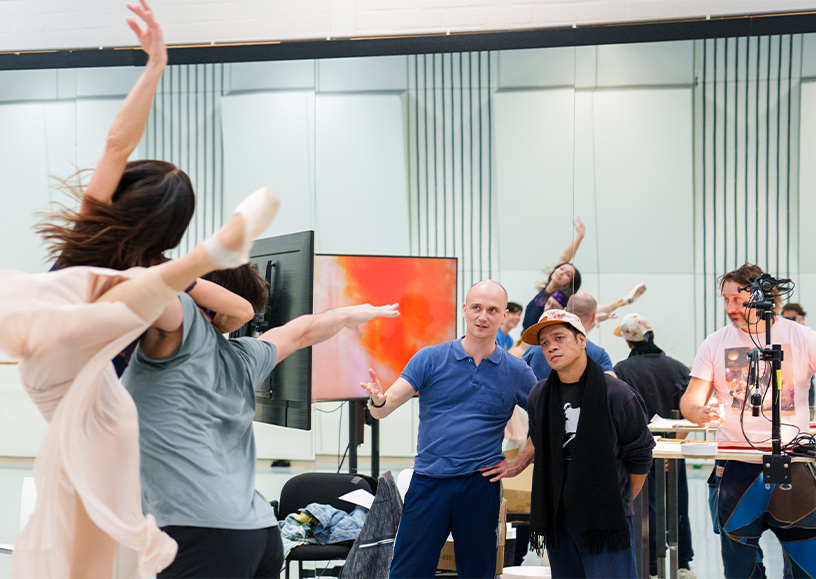
So how do you begin? How do you interpret such a complex book in contemporary dance?
Marco: “Ernst and I have such similar energy levels that we can sense in each other what we want and don’t want, practically without fail. I say something, he says something, and that rapidly builds up into a performance. Later on, you filter it, but our creative flow is super fast.” He laughs, “And almost scarily harmonious.”
Ernst: “We think and feel the same way about what we want to show and convey. And we don’t need to explain it. For Dorian, for example, we soon knew that we wanted to focus on four main characters. Although we’re absolutely true to the line of Wilde’s book, we do have to make choices, as you can’t tell a story from A to Z in dance.”
Marco: “And although we follow the storyline, it’s also about our interpretation of it and how we relate the story to today.”
Ernst: “Something we found particularly important was that the audience had to feel for the characters and really empathise with them.”
Marco: “For me, that’s also the ‘secret’ of dance. If you don’t understand the story very well, you should at least feel what happens on stage. And vice versa, if you watch a rather abstract dance work that you don’t really ‘click’ with, then you should at least be able to understand it in the context of the story.”
Ernst: “The new composition by Joey Roukens gave us a fantastic structure and basis. We talked through all the scenes with Joey, and he’s created such a wonderful musical interpretation of them.”
Marco: “It’s amazing how well he understood our intentions. Even before choreographing a single step, we immediately saw the story in front of us.”
Which aspects of the book do you want to zoom in on?
Ernst: “The idea of eternal beauty is, of course, very relevant nowadays. On social media, we all show our best and most beautiful side. But what especially touches us is how you can lose yourself in that desire to remain beautiful forever. Even though Dorian is dragged into a decadent, sinister world by Henry, it’s Dorian himself who goes overboard and loses himself completely. So the question is: how far do you go. Do you allow yourself to get lost, and what does that mean?”
Marco: “The painting of Dorian receives all the blows. Every time he does something wrong, his portrait becomes uglier – but only his portrait. Just imagine if that happened in real life: if someone else received the blows and you never had to take the consequences of your misdeeds yourself. How far would you go then? In the beginning, you might feel very guilty, but at a certain point, you’d level off. And that’s exactly what happens to Dorian.”
Ernst: “It’s actually very tragic. Dorian reaches a point where he can’t go back, yet before him lies nothing but loneliness.”
Marco: “The more popular he becomes, the lonelier he gets. It’s the same today. Just look at all those international celebrities who are made or broken by the media. How many of them actually lead the life they want to lead? And if they’d known the consequences of their fame beforehand, would they have made the same choices?”
Ernst: “At a certain point, Dorian can no longer tell reality from fantasy. We wanted to find out what’s going on in his mind then. And how he gets lost in the labyrinth of his thoughts.”
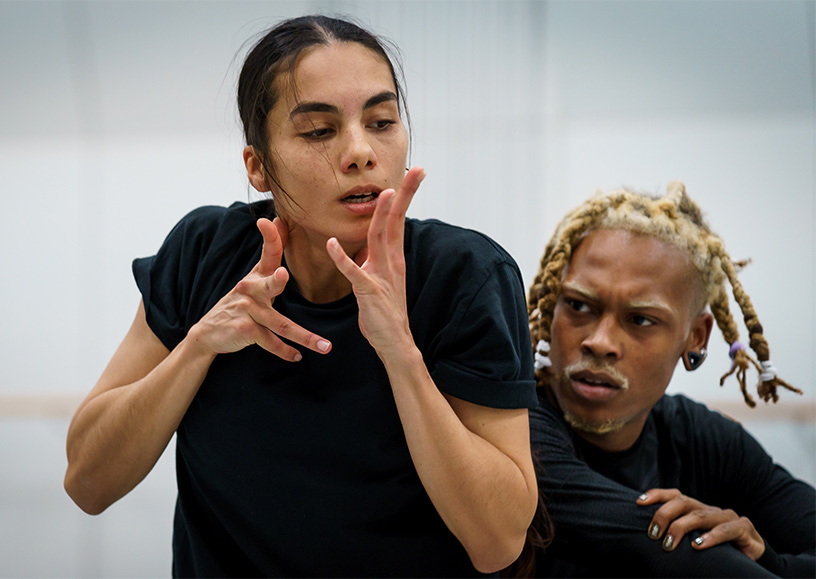
One thing you use for that is a labyrinth of mirrors. But you also work with an artist who makes live drawings. What’s his role?
Ernst: “In Wilde’s book, a big role is played by the painting and by the art of drawing. So I thought it was important to emphasise those aspects in our production.”
Marco: “Through the designer Dieuweke van Reij, we came into contact with Luca Andrea Stappers, who turned out to be the ideal person for what we had in mind. We didn’t want an artist who could draw precisely this or that, otherwise we could have asked an interior designer. In Dorian, Luca has raised the art of drawing to great heights. He works with charcoal, ecoline and ink, but also uses all sorts of crazy special effects, which he’s thought up specially for the occasion.”
Ernst: “He literally creates the scenery and gets things going, but he has no specific role in the story.”
Marco: “Although we did brainstorm about that. Shouldn’t he represent Oscar Wilde, or be a narrator, or maybe even Basil? But in the end, we thought it was better to leave it up to everyone’s imagination.”
Oscar Wilde said himself that his book contained a ‘moral’: ‘All excess, as well as all renunciation, brings its own punishment’. Do you also want to give a message or advice through Dorian?
Ernst:“We definitely don’t want to lecture anybody. Our intention is that people are moved and overwhelmed. But we also ask the question: aren’t you Dorian yourself in a certain sense; aren’t we all a bit Dorian? How far do you let yourself go, and do you lose yourself too once in a while?”
Marco: “Of course, you can also just enjoy the beauty of dance. But it’s even nicer if at the end you realise that actually we are all Dorian! Because if we look really deep inside ourselves, aren’t we all guilty of creating an avatar, and of leading a second – or secret – life?”
Text: Astrid van Leeuwen
Translation: Susan Pond
The Picture of Dorian Gray
The Picture of Dorian Gray is the only novel published by the Irish writer Oscar Wilde (1854-1900). Originally, Wilde wrote a shorter work, which appeared in Lippincott’s Monthly Magazine, in 1890. Afterwards, he made changes to the story and expanded it, and it was published in book form in 1891 (some of those books have survived).
Wilde’s novel deals with the pursuit of eternal youth and becoming totally consumed by that pursuit. The protagonist Dorian Gray wants to stay as young and handsome as he looks in the portrait painted by his friend Basil. His dream comes true: his portrait becomes older and uglier, and he doesn’t. On the inside, however, Dorian does become increasingly ugly and malicious. Without scruple, he takes one wrong step after another, and suffers the consequences of his actions.
Although critics were initially disparaging about the book – finding it morally and spiritually depraved – The Picture of Dorian Gray is still a source of inspiration today. Numerous film and opera directors, as well as theatre and television makers, have given their own interpretation of it.
From tender and accessible to moody and bleak
Composer Joey Roukens about the music for Dorian.
From tender and accessible to moody and bleak
Composer Joey Roukens saw it as ‘a real honour’ that choreographers Ernst Meisner and Marco Gerris asked him to write the music for Dorian. He did, however, think twice about it. “Music for a full-length performance keeps you busy for a long time – and I’m fairly slow at composing. But the great concept and the infectious enthusiasm of Ernst and Marco meant that all I could think was ‘Come on Joey, you can’t let such a unique opportunity pass you by.’”
Roukens is one of today’s most striking Dutch composers and has already put his name to a considerable number of exceptional orchestral works. However, composing a piece for a dance performance was new to him. In the end, it took him a year to write his composition for Dorian. But how do you begin a project like this one? Roukens explains, “I took the main characters in the story as my starting point and gave each of the four their own melodic theme or motif. That just happened naturally when I sat down at the piano – my fingers are sort of like antennae that link up to my musical ideas. The melodies that developed not only gave me structure during the creation process, but they’ll give the listener something to latch on to as well.”
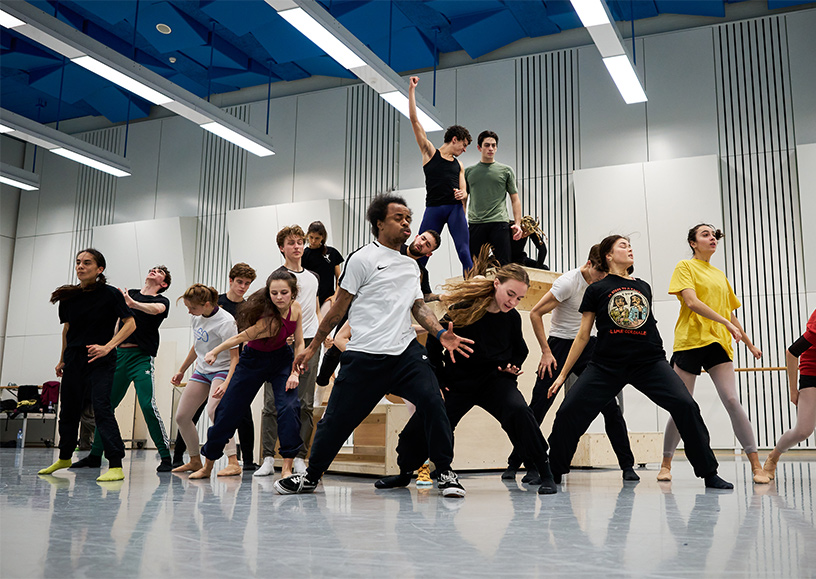
Developing themes
Throughout the piece, Roukens allows the four musical themes to change along with characters’ psychological development. “In the beginning, for example, Dorian’s theme still sounds nice and romantic, but at the end he has turned into a very ugly person on the inside. That’s reflected in the music. His theme gets more and more distorted and eventually becomes a sort of creepy version of the initial melody.” The mutual relationships in the story also influence the music. “I’ve given Henry a sinister motif, consisting of four notes and ending with a ‘tritone’: a musical interval that used to be associated with the devil. The more influence Henry gains over Dorian, the more often their themes cross and the sinister motif is heard in Dorian’s melody.”
Danceable
Roukens’ works are usually performed as autonomous pieces, but his composition for Dorian had to fulfil one important condition. “The piece has to be danceable! I kept that fact continually in mind. I also took account of the collective dance idiom of Marco and Ernst. It’s very eclectic – they combine various styles – and I thought that was something that ought to be reflected in the music. So the composition comprises not only classical music, but also references to pop and hiphop. The music is anyway rather colourful and moody. I don’t like playing it safe. I want to provoke a bit – which I prefer to do through combining a variety of styles and creating something that the audience doesn’t know yet.”
Total experience
And then everything has to come together. “Recently, I watched a rehearsal for the first time, and in some sections I even got a bit emotional. I thought ‘wow, that choreography fits the music really well!’ I think it’s going to be a very special total experience. Impressive, poignant and surprising. At least that’s what I want to give to the audience.” He laughs, “But of course it would also be nice if all the audience went out of the theatre humming the Dorian theme!”
Text: Lune Visser
Translation: Susan Pond
